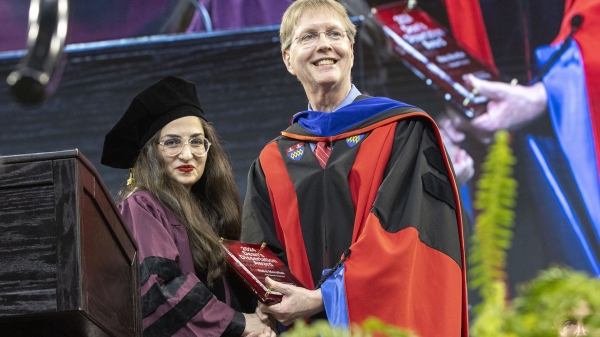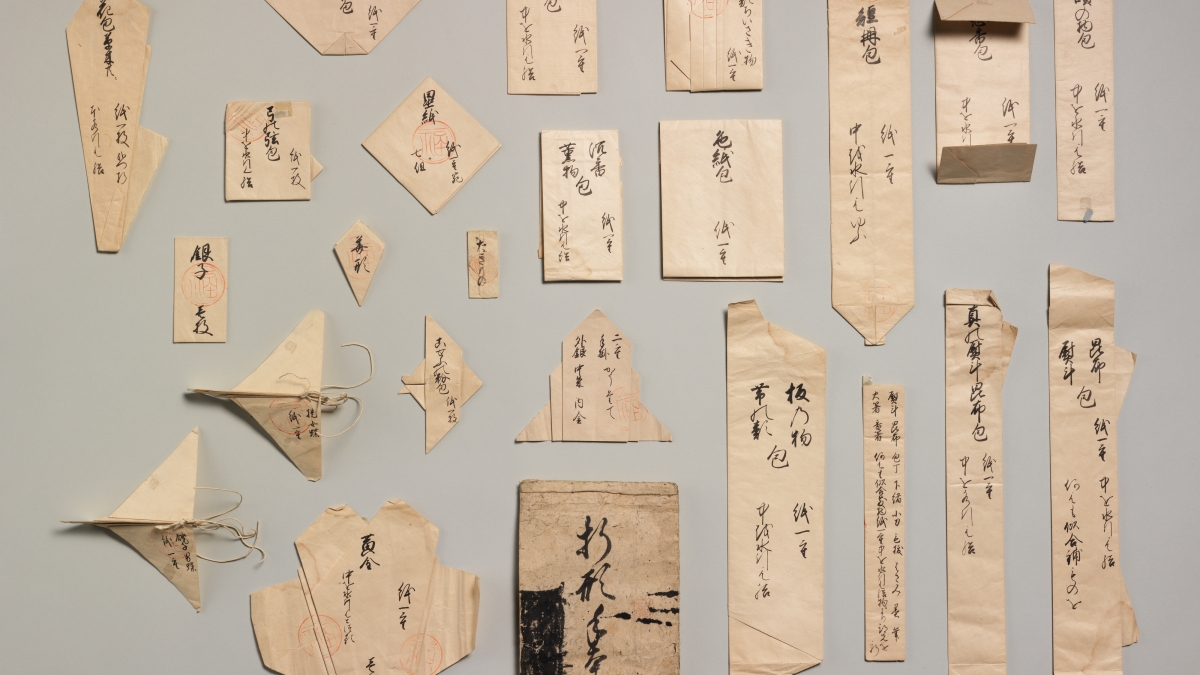To help usher in the 21st century with a radical new mechanical structure, Hanqing Jiang reached back to the eighth century for inspiration.
The Arizona State University mechanical engineer was inspired by origami, the ancient Japanese art of paper folding, to create a mechanical structure that can unfold and lock to support massive loads.
Jiang has been interested in the potential of origami since leading a team that developed a stretchable battery three years ago.
His new structure is simple, a cylinder that unfolds and then locks into place.
“It can be easily deployed and carry a load,” said Jiang, a professor in the School for Engineering of Matter, Transport and Energy in the Ira A. Fulton Schools of Engineering. “Once deployed, it can be very rigid.”
The model Jiang built can support a 2,000-pound weight. A paper on the design was published last week in the Proceedings of the National Academy of Sciences.
Springs are inside the support tubes, allowing them to expand and collapse. “It’s very neat mechanical work,” Jiang said.
Even when constructed out of only stiff paper and rubber bands, the structure will support a 10-pound weight.
“As far as we know, this is the first piece of work that can have selective collapsibility,” Jiang said.
It’s a creative design that could influence everything from spacecraft to robotics to medicine, said Kyle Squires, dean of the Ira A. Fulton Schools of Engineering.
“One of the unique facets of this work is that it combines the old and the new in really creative ways, in this case the aesthetics and ancient techniques of origami with the pillars of engineering mechanics,” Squires said. “This in turn opens up thinking about how to create structures and new designs in areas where the challenges are immense, from stents to expandable modules for spacecraft.”
In robotics, the structure could change stiffness in an exoskeleton, like Iron Man’s armor in the Marvel movies, where the plates expand and then lock to become rigid. Jiang explained that the stiffness of the structure could be tuned to achieve such a result.
Inflatable modules already are being tested on the International Space Station. However, they aren’t load-bearing. Jiang’s design could add more room to the space station or other spacecraft, or to a habitat on Mars or the moon, while also withstanding enormous stress.
Shrink it down, and the cylinder could be deployed as a stent in cardiology or neurosurgery.
“This structure can have broader implications,” he said. “(It) has lots of applications.”
Top photo: Ancient origami inspired the work of ASU mechanical engineer Hanqing Jiang. Photo courtesy of the Metropolitan Museum of Art
More Science and technology
Extreme HGTV: Students to learn how to design habitats for living, working in space
Architecture students at Arizona State University already learn how to design spaces for many kinds of environments, and now they can tackle one of the biggest habitat challenges — space architecture…

Human brains teach AI new skills
Artificial intelligence, or AI, is rapidly advancing, but it hasn’t yet outpaced human intelligence. Our brains’ capacity for adaptability and imagination has allowed us to overcome challenges and…

Doctoral students cruise into roles as computer engineering innovators
Raha Moraffah is grateful for her experiences as a doctoral student in the School of Computing and Augmented Intelligence, part of the Ira A. Fulton Schools of Engineering at Arizona State University…
